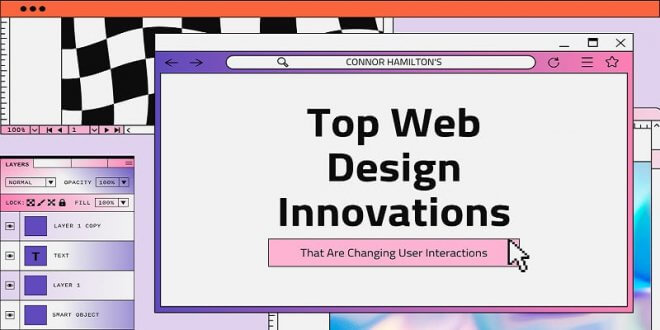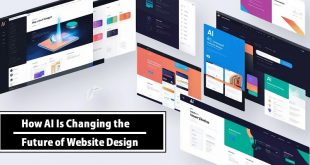The digital landscape continually evolves, with web design at the forefront of creating engaging user experiences. As we navigate through various websites daily, it’s the subtle innovations that often make a profound impact on how we interact with content online. This article delves into the top web design innovations that are reshaping user interactions in the digital space.
Intuitive User Interfaces (UI)
In the realm of web design, the interface is the bridge between users and digital experiences. Modern web design is adopting more intuitive UIs that are both aesthetically pleasing and functionally superior.
- Minimalism: A less is more approach ensures users are not overwhelmed by excessive information.
- Voice-Activated Interfaces: As voice search becomes more prevalent, integrating voice UI enhances accessibility and ease of use.
- Micro-Interactions: Small animations and visual cues that respond to user actions create a dynamic interaction that encourages engagement.
These innovations contribute to a more seamless web design process, focusing on user satisfaction and retention.
Accessibility and Inclusivity
Creating a web design that caters to a diverse audience is not just a moral imperative but also a business one. In today’s digital age, ensuring that your website is accessible to all, including those with disabilities, can significantly widen your reach and impact. Here’s how AI is making strides in fostering an inclusive environment:
- User-Friendly Interfaces: AI-driven tools can adapt interfaces to meet the needs of users with varying abilities, enhancing usability and navigation.
- Keyboard Navigation: Designing for keyboard-only navigation allows users with mobility impairments to interact with your site effectively.
- Alt-Text Generation: AI can automatically generate descriptive alt-text for images, aiding those who use screen readers to better understand visual content.
Embracing these inclusive practices in the web design process isn’t just ethically sound—it also expands your audience reach.
AI-Driven Experiences
The use of AI in web design is not just about automating tasks; it’s about creating a dynamic user experience that adapts to user behavior.
Personalization at Scale
With the integration of AI, websites can now offer personalized experiences at a scale previously unimaginable. The AI assistant doesn’t replace human creativity. It augments it by providing insights based on user data, which can inform design decisions that resonate more deeply with individual users.
Enhancing the Web Design Process
Incorporating AI into the web design process can streamline complex tasks, such as:
- Layout Generation: AI algorithms can suggest optimal layouts that are likely to engage users based on historical data.
- Content Optimization: AI can analyze user interaction data to recommend content adjustments for improved engagement.
- Automated A/B Testing: AI tools can automate the process of A/B testing, rapidly determining the most effective design elements and user flows.
- Predictive User Experience (UX): Utilizing predictive analytics, AI can forecast user actions and provide tailored user experiences preemptively.
- Real-Time Personalization: AI can dynamically personalize web pages for each visitor in real time based on their interaction patterns and preferences.
Advanced Animations and Interactions
As digital experiences become more sophisticated, web designers push the boundaries with advanced animations and interactive elements. These features not only capture attention but also create a more dynamic and engaging user experience. Here’s how they’re making an impact:
- Microinteractions: Small animations that respond to user actions can significantly enhance the feeling of direct manipulation and offer intuitive feedback.
- Motion Graphics: Complex graphical animations that tell a story or guide the user through the website can make for a memorable experience.
- Interactive Storytelling: Utilizing animations to unfold a story as the user scrolls through the page adds depth and narrative to the user’s journey.
By integrating these cutting-edge techniques, designers can create more than just websites; they craft immersive digital stories.
Mobile-First Design
With mobile browsing surpassing desktop, the importance of mobile-first design has never been greater.
A key aspect of modern web design is ensuring that websites look and function flawlessly across all devices. This is where responsive and adaptive design comes into play, allowing for layouts and features that cater to the user’s device, providing an optimal browsing experience regardless of screen size.
In a mobile-first world, speed is crucial. Designers are optimizing images, leveraging caching, and minimizing code to ensure that mobile users enjoy fast loading times.
The Wrap-Up: Web Design Innovations
Web design is an ever-evolving field, with new innovations continually emerging. By staying abreast of these trends and integrating them into the web design process, designers can create more engaging, intuitive, and inclusive websites that stand out in the digital landscape.
After all, a successful website is one that not only looks good but also connects with users on a level that encourages interaction and engagement.
 free html design Free html design templates
free html design Free html design templates






